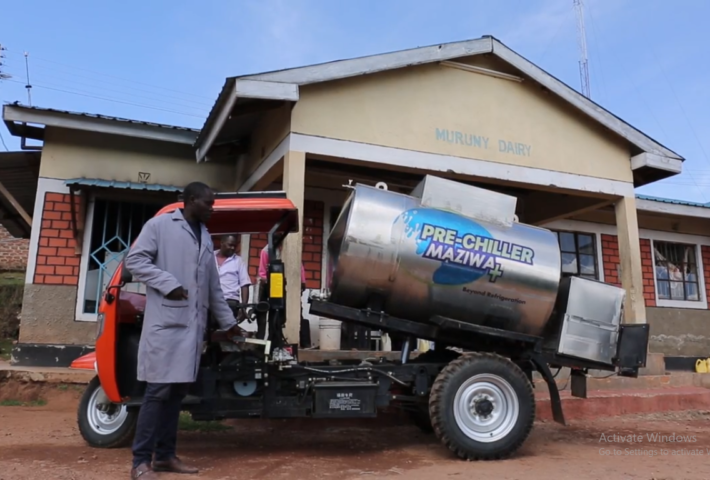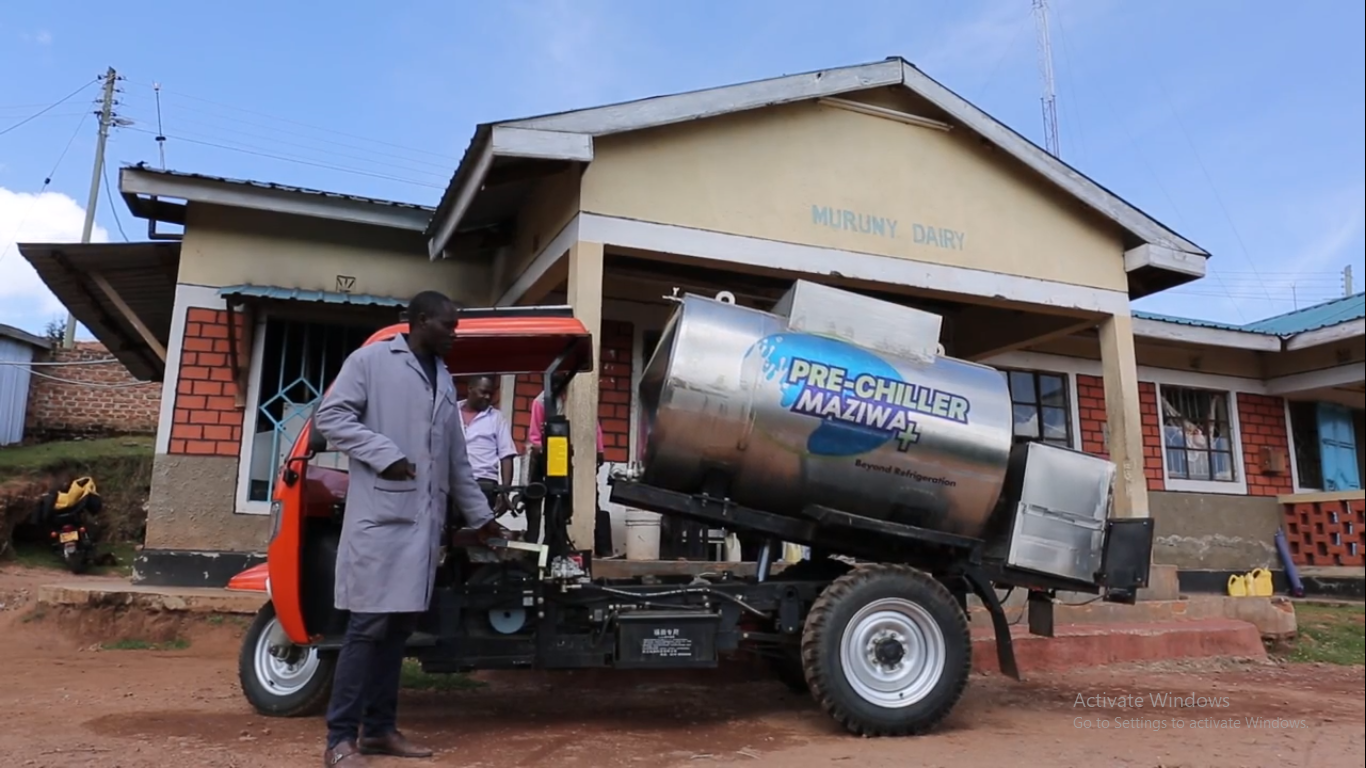Meet Savanna Circuit Tech: Grand Prize Winner of the Cisco Global Problem Solver Challenge 2020
August 24, 2020
Written by Stacey Faucet
Now that the Cisco Global Problem Solver Challenge 2020 winners have been officially announced, you’ll want to learn more about each winning team and the story behind each innovation. In its fourth year, this online competition awards cash prizes to early-stage startups to develop a solution that drives economic development or solves a social or environmental problem.
We are excited for you to learn more about the 2020 winning teams addressing some of the biggest challenges we face through technology-based solutions.
We will start with Emmastella Gakuo and Percy Lemtukei, the co-founders of Savanna Circuit Tech, who were awarded the Grand Prize of $100,000 USD. Watch their reaction video here:
Emmastella and Percy founded Savanna Circuit Tech in 2017, after meeting at the University of Nairobi, Kenya. They developed a solar chilling in-transit system to help dairy businesses in Africa cut post-harvest losses. Savanna Circuit manufactures and distributes last-mile, non-refrigerant, solar-powered milk chillers that can be placed on any means of transportation – from motorbikes to trucks. Their AI-enabled ICT solution allows milk aggregation, traceability, and quality control to prevent milk spoilage and maximizes profits for dairy producers. We recently sat down with them to learn more about their story, motivation, and innovative concept:
What problem is your technology solution trying to solve?

Emmastella: We are trying to solve the challenge of post-harvest losses across value chains. Our niche currently is dairy, because dairy has been left behind in terms of technology access. So, we wanted to find a solution that comprehensively solves farmers’ problems, especially smallholder farmers.
In Kenya, 70 percent of dairy producers are smallholder dairy farmers, and one million people work on these family-run farms. These smallholder farmers produce 5.3 billion liters of milk each year – 30 percent of which goes to waste. The milk goes to waste because it takes a lot of time to get it from the point of production to corporate chains that assist with marketing and selling it. The transportation can take up to five hours using animal transport, bicycles, or people walking from their homes.
When transportation takes this long, we have microbial growth in the milk, which leads to rejection of the milk at dairy cooperatives, which in turn affects revenues and profits. The challenge is developing a tech solution that is sustainable when working with smallholder farmers.
What inspired you to develop this solution?
Percy: I grew up around dairy farmers as well as other forms of farming. I saw what these farmers go through, working from dusk to dawn, only for their produce to spoil, or, in some cases, not getting the full value of their product. I met Emmastella at university, and we were discussing how most of these dairy communities work hard, but see little profit. We wanted to use the knowledge we have academically, and our connections in the supply chain, to make the world a better place. That is how we came up with Savanna Circuit Tech.
Can you explain how the solution works?

Emmastella: We have a hardware and software solution. For the hardware solution, we have mobile solar-powered milk chillers that can be mounted on basically any means of transportation, like on a motorcycle or a truck. The units come in various sizes and are portable, to increase accessibility for more farmers. In places where there is not a lot of milk volume, we also wanted to have them onboarded into the system. So, that is why we have an average capacity of 100 liters to a 1,000 liters.
We are 100 percent powered by solar power. We mount solar panels on top of the means of transportation. We have temperature sensors that regulate the milk, so it doesn’t overchill or overheat. There is a hold time of up to 36 hours to maintain the milk’s temperature.
The software is a web and mobile-based application that has a geo-location aspect, where we can map each dairy farmer. Data is collected and recorded onto the system, such as the volume and pH level of the milk, and the farmer can receive the same data through SMS on their mobile phones. We can see what happens in real-time, eliminate any aspect of human error, and the overall transparency creates trust between producers and cooperatives.
How will winning a prize in the Cisco Global Problem Solver Challenge help you advance your business?
Percy: For one, it is a validation. Cisco is a big corporation, and winning the Grand Prize means we are headed in the right direction. It will make a big difference because with the current situation of the global pandemic and at our stage of growth, we need a lot of investment.
Do you know what you will use the prize money for specifically?
Emmastella: This will majorly help in strengthening the business. We will be able to acquire new talent, finalize our manufacturing process, by having all the tools and equipment in place, and all the machinery installed into the new manufacturing facility. We’ve been in talks with a major processor who wants to have solar power refrigerated trucks with a bigger capacity that will bring in more business.
How has the global pandemic impacted your work?
Emmastella: There has been a significant shift, primarily since dairy cooperatives sell their milk, not only to processors, but also directly to institutions, like high schools and hotels. That led us to think about how we can use chillers to facilitate the movement of milk to households directly. That brought us an opportunity for the business, and we are hoping to develop that further. There has been a shift in logistics because the majority of transport has been locked down. So, that has led to more demand for our equipment.
Why did you decide to start your own social enterprise versus going to work for a company?
Percy: Career-wise, you always want to grow, and it feels good when you create change. Like now, with this product, for the 6,800 farmers we have worked with, it is impressive to see them transform from a subsistence kind of farming to market-based. They realize they can do this and make a profit, and it is not just about survival. That is why we had a very different way of growing this product. We designed it with the farmers – and our first technical team included 15 farmers who were also the focus group for feedback. We wanted them to feel they are part of something, something that is theirs.
What is the best piece of advice you received about starting your social enterprise?
Percy: I would say, especially for technical businesses, do not center the objective of your business around your academic knowledge or capabilities. It is not a measure of how much you can do, in terms of the product; it’s what you can do to address an actual problem.
Emmastella: For anyone running a social enterprise, if you solve a problem, there will always be demand for the product. You don’t work and expect to make money immediately. Instead, you put in the work while you listen to your customers and users of your products. And when profits do come later, that is just validation of your hard work.
Do you have any advice for next year’s applicants?
Emmastella: First of all, the Cisco Global Problem Solver Challenge is a huge opportunity for any business. Not just for the prize money part of it, but also for the networks and the business development support. Therefore, everyone should put in the work, in terms of making a comprehensive application. I would advise you to complete the application together with your team.
What is your favorite book and why?
Emmastella: My all-time favorite book is Shoe Dog: A Memoir by the Creator of Nike, by Phil Knight. It is my favorite book because it is very authentic for any entrepreneur who wants to venture into bringing a new product to life. I found it very resourceful as it shows you how to build a successful business empire.
What is your favorite activity when you are not working?
Percy: Movies, specifically SciFi, because that is my source of inspiration. One of my favorites is Star Trek.
Emmastella: I am an outdoor person, so I do a lot of hiking, and sometimes we do it together as a team. We also like to ride motorbikes in new areas. And of course, I love hanging out with young girls [to] hear what they want to do and mentor them.
Republished from Cisco Blogs

